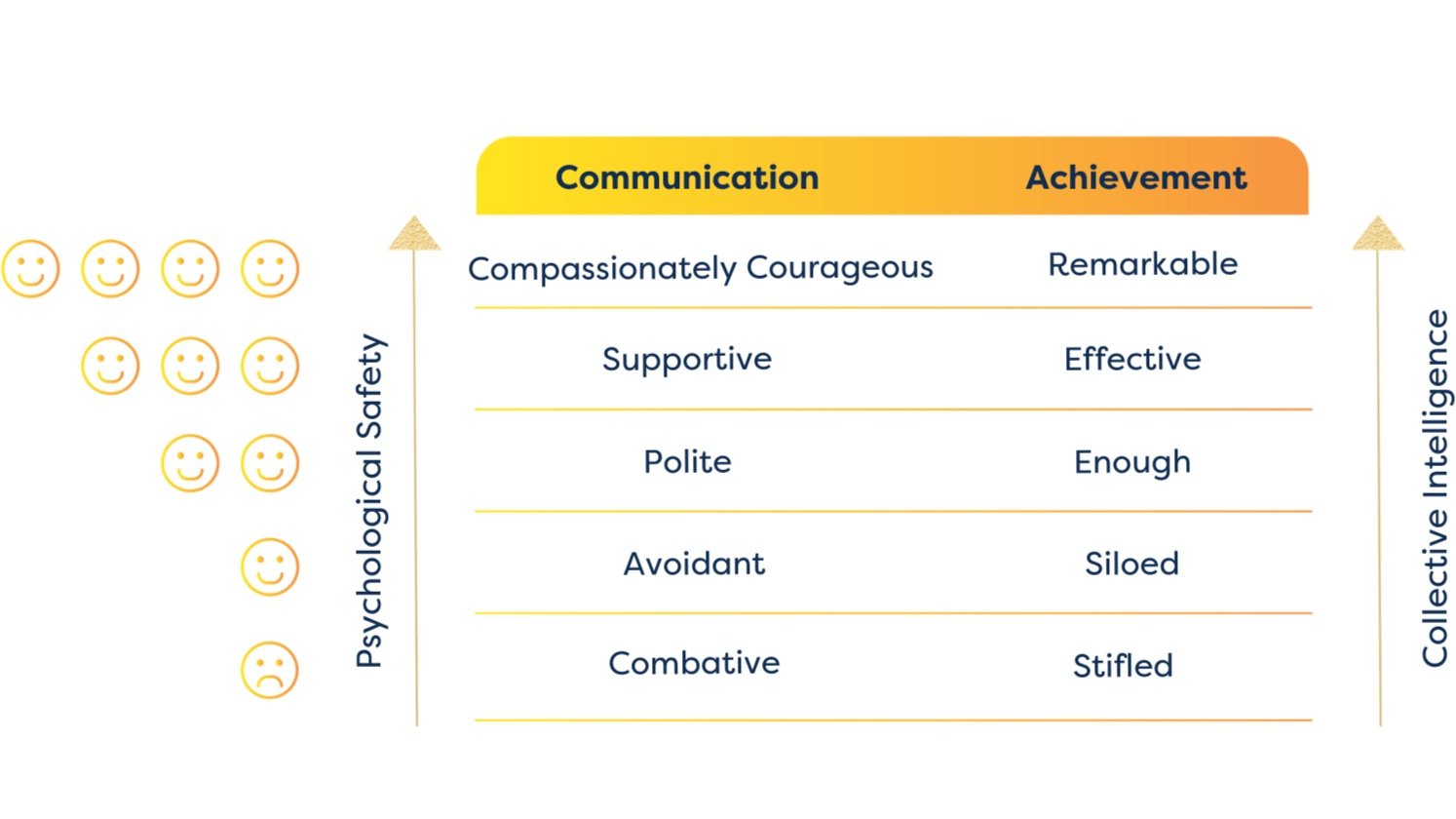Psychological Safety
Safety is the single most important indicator of high performance. When we have safety we can have high levels of conversational transparency, behavioural agility, and sustained innovation.
We can capitalise on the diversity of thought within a group and we have higher levels of connection to each other and our work.
For the ever-changing world we work in, we must be able to speak up, show up and connect in a way that creates trust and effective decision-making.
This program is focused on mobilising our collectives to maximise our outcomes.
Where are you and your teams right now?
This model is used to help people reflect on the value of increasing psychological safety as well as what is possible for engagement, communication and outcomes.
How do we get more psychological safety?
There are three things that create a safe space for a team or a larger collective.
(i) We must know what our collective goals and motivations are and they must be of at least equal status to our individual goals.
(ii) We must have people in our group who are able to self-manage their reactions to enable their best selves to operate even when in challenging circumstances.
(iii) We must have people who are capable of understanding how to communicate effectively and how to create safety interpersonally.
This training can be run across a half day, full day, or two days depending on the needs and level of your audience. Here are some of the aims of the training, which become more specific to your needs on consultation of your needs.
Understand the different definitions of psychological safety
Have created a definition for you to take back to your team for discussion
Understand the research in this area and how it relates to the performance, engagement, and learning of your teams
Understand the impact of low and high psychological safety (e.g. collective intelligence, engagement, courage, and increasing psychosocial risk
Understand the legal implications of OHS Regulations
Be able to spot the signs of psychological safety and when it is compromised
Have a framework that will help you generate psychological safety when you return to the workplace
Have created an individual plan to impact the teams you work with immediately
Understand your own role in creating psychological safety
Have clarity on what you need to hold others to account when driving psychological safety
Have clarity on what we can do in a hybrid/global world to create psychological safety online
Have guidance on the conversations you need to have when you return to work (with direct reports, peers and other leaders)
Have clarity on the ways to increase your own self-safety
All training has an embedding follow-up process that enables continued learning and growth.
There are options to add online curriculums too or include copies of Amy’s paperback books.







